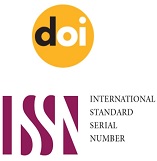Prueba matemática para educación remota en secundaria
DOI:
https://doi.org/10.26490/uncp.alboradaciencia.2022.2.1114Palavras-chave:
educación remota, matemática, competencias, resolución de problemas, utilidadResumo
El presente artículo, tiene el propósito de elaborar, validar y que sea fiable el instrumento que es una prueba de matemática “Practicando lo aprendido” para los estudiantes del tercer grado de educación secundaria, con el fin de lograr las competencias matemáticas y en especial la utilidad de esta. Desarrollando varios procesos, primero fue elaborar el instrumento teniendo en cuenta el modelo de la prueba de Evaluación Censal de Estudiantes (ECE), pero contextualizada al lugar y a las circunstancias que estamos viviendo en esta pandemia, contando con ocho jueces expertos validando con la prueba binomial resultando valida al 100%, luego se aplicó la prueba piloto a veintiséis estudiantes de dos instituciones educativas de similares características, para la confiabilidad se utilizó la prueba de Alfa de Cronbach, resultando 0,688 valor que indica adecuado, que tiene consistencia interna. Concluyendo que el instrumento es válido y confiable para lograr desarrollar las competencias matemáticas en estudiantes del tercer grado de secundaria.
Referências
Argimon, P. y Jiménez, V. (2012). Método de investigación clínica y epidemiológica. 4ta Edición. España.
Courant, R. (1979). ¿Qué es la MATEMÁTICA? Una exposición elemental de sus ideas y métodos. Recuperado de https://www.cimat.mx/~gil/docencia/2010/elementales/que_es_la_matematica.pdf. Edición Española.
Cronbach, L. (1951). Coefficient alpha and theinternal structure of test. Psychometrika.
Gómez, J. (2002). De la enseñanza al aprendizaje de la matemática. Barcelona. Paidós.
Ministerio de Educación del Perú (2007). Proyecto Educativo Nacional al 2021. La educación que queremos para el Perú. Recuperado de http://www.minedu.gob.pe/DeInteres/xtras/PEN-2021.pdf
Ministerio de Educación del Perú (2017). Currículo Nacional de la Educación Básica. Recuperado de http://www.minedu.gob.pe/curriculo/pdf/curriculo-nacional-de-la-educacion-basica.pdf
Ministerio de Educación del Perú (2016). Marco de fundamentación de las pruebas de la evaluación censal de estudiantes. Recuperado de file:///D:/Marco-de-Fundamentaci%C3%B3n-ECE.pdf
Ministerio de Educación del Perú (2019). ¿Qué logran nuestros estudiantes en Matemática? 2º grado de secundaria.
Rico, L., y Lupiáñez, J. (2008). Competencias matemáticas desde una perspectiva curricular. Madrid. España. Alianza Editorial.
Uzuriaga, L., Vivian, L., y Martínez, A. (2006). Retos de la enseñanza de la matemática en el nuevo milenio. Scientia Et Technica.
Downloads
Publicado
Edição
Seção
Licença
Copyright (c) 2022 Helen Rocío Olivares Ch´ávez

Este trabalho está licenciado sob uma licença Creative Commons Attribution-NonCommercial-ShareAlike 4.0 International License.









